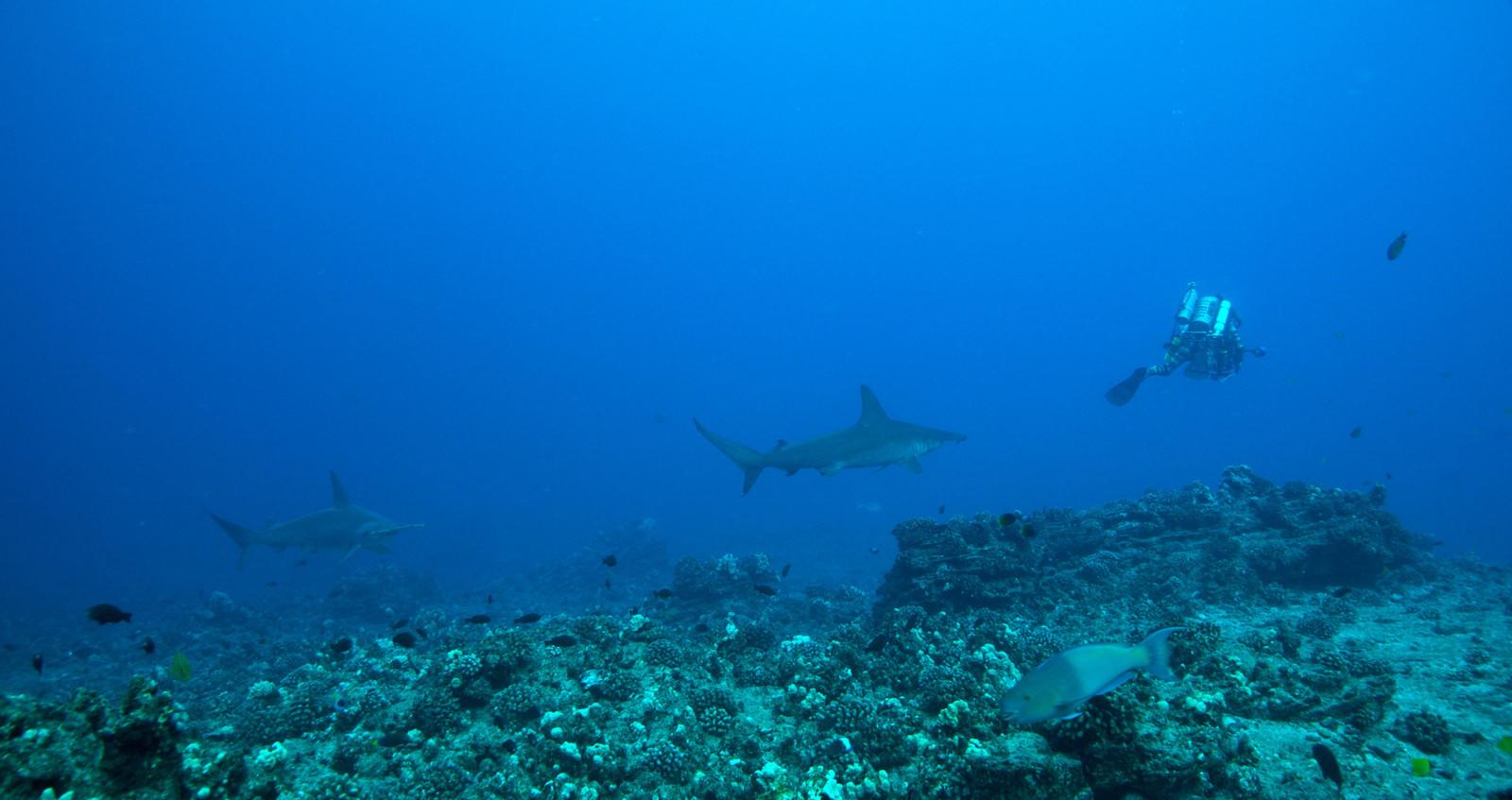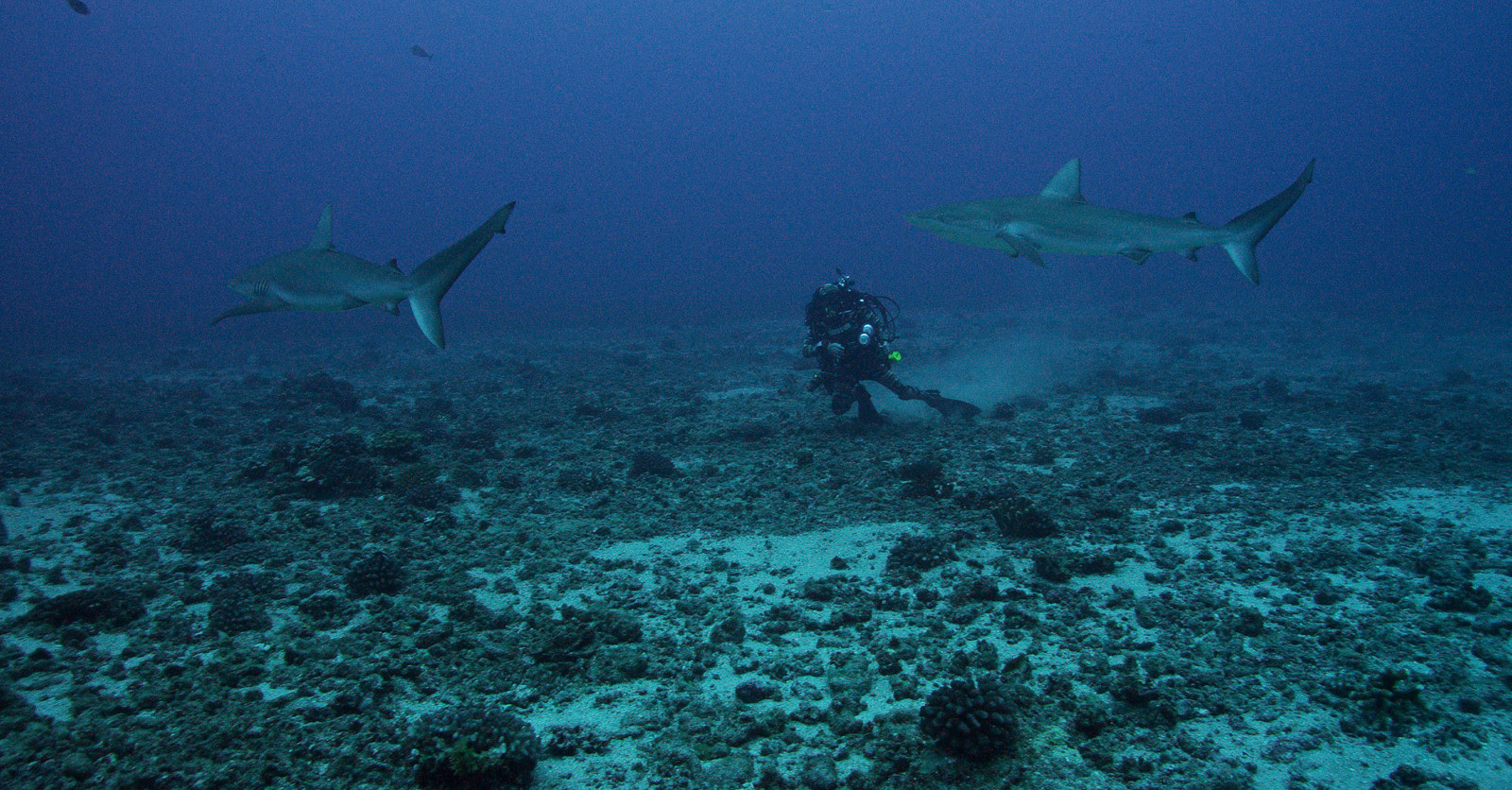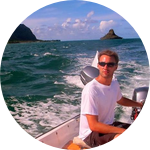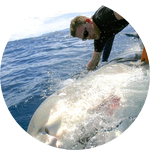About This Project
Hawaii has a population of Scalloped Hammerhead sharks (Sphyrna lewini), forming aggregations at specific sites. Yet our lab catches them rarely, has never tagged an adult female, so we know little of this populations' ecology. To learn more, we need a completely different approach to tagging these sharks. We're proposing to use Closed-Circuit Rebreather (CCR) technology to stealthily tag four individuals from S. lewini aggregations, using a modified pole-spear to equip them with satellite tags.
Ask the Scientists
Join The DiscussionWhat is the context of this research?
Hawai'i has a geographically isolated population of Scalloped Hammerhead sharks (Sphyrna lewini). We know very little about them. We don't know much because adult S. lewini are difficult to catch using the conventional hook and line fishing techniques. Our research group has used hook and line methods to capture and tag thousands of sharks over the past 20 years. During these extensive efforts we have only successfully satellite-tagged 4 adult male S. lewini. We know S. lewini form large aggregations at specific locations around Hawai'i, but we rarely catch them. We know that CCR allows divers to swim among these aggregations, close-enough to individuals to successfully tag them. We aim to outfit at least 2, if not 4 female S. lewini with satellite tags to begin to learn more about them.
What is the significance of this project?
S. lewini were listed in Appendix II of the Convention on International Trade in Endangered Species (CITES) in 2013 and listed as endangered and threatened under the Endangered Species Act (ESA). The Hawaiian population of S. lewini is considered stable, due to geographic isolation and a state-wide inshore long-lining ban. The population in Hawai'i is an ideal study population, from which we can base ecological models. Scalloped hammerhead sharks are the first elasmobranchs to be listed as regionally endangered, and what we learn from their ecology in Hawai'i can improve the effectiveness of conservation efforts in regions where these sharks are already heavily impacted.
What are the goals of the project?
We plan to develop an efficient and relatively non-invasive means to collect data on this S. lewini population. We will examine the movement patterns and space use of the population,and establish areas of core residency and key habitat areas.This analysis will also help us look for indicators of other aggregation sites.
We will estimate the local population size and elucidate structure and distribution of the location population and sub-populations. When we tag the sharks we will also collect tissue samples used in genetic and stable isotope analysis. The preliminary data from this project will provide the foundation for future studies on S. lewini. A final broad objective is that data gleaned from this proposal will provide the motivation for future funding of further study.
Budget
The budget for this study is large, and probably seems extremely large, yet the study we are proposing is really a proof of concept study to demonstrate the efficacy of our methodology. Unfortunately, the reality is that undertaking research in highly mobile and dynamic marine species requires the use of hardware and technology that is expensive.
This study calls for the deployment of at least 2, but hopefully 4 satellite tags. While we expect these tags to acquire some fantastic data, it will only begin to paint the bigger picture of what the rest of the population is doing.
By successfully implementing this study, we aim to demonstrate our ability to gather high quality data on this now endangered, elusive shark species, and so encourage significant future funding from institutions to expand the study and truly close this knowledge gap.
The proposed budget results from sourcing multiple options, and represents the least expensive options without compromising efficiency or quality.
Meet the Team
Affiliates
Team Bio
After undergrad I thought I was set on studying coral ecology and conservation, but in 2008 my aspirations took a turn when I got accepted as an intern working with white sharks in South Africa. The thrill of working with this charismatic mega-fauna changed my focus and ever since I've been studying fish and sharks.
I started my masters in Zoology at the University of Hawai'i in 2009 and am now working towards my PhD. I have experience working with hammerhead sharks as a research assistant with the Pelagic Fish Research Lab.
The hammerhead is particularly interesting to me. Hammerheads have evolved a unique head morphology which provides them with heightened sensory capabilities. Research shows that Hammerheads life histories and physiological capabilities are very unique, but we still really don't know why this is the case or this is achieved.
This is a unique opportunity to really understand the scalloped hammerheads box of secrets. We are fortunate to have almost unrivaled access to an un-impacted population, which makes it an ideal population to base ecological models. The results of this project will provide critical information needed by government agencies and resource managers to improve the effectiveness of conservation and management strategies in areas where these sharks are heavily impacted.
Additional Information


Project Backers
- 29Backers
- 100%Funded
- $9,000Total Donations
- $155.17Average Donation


